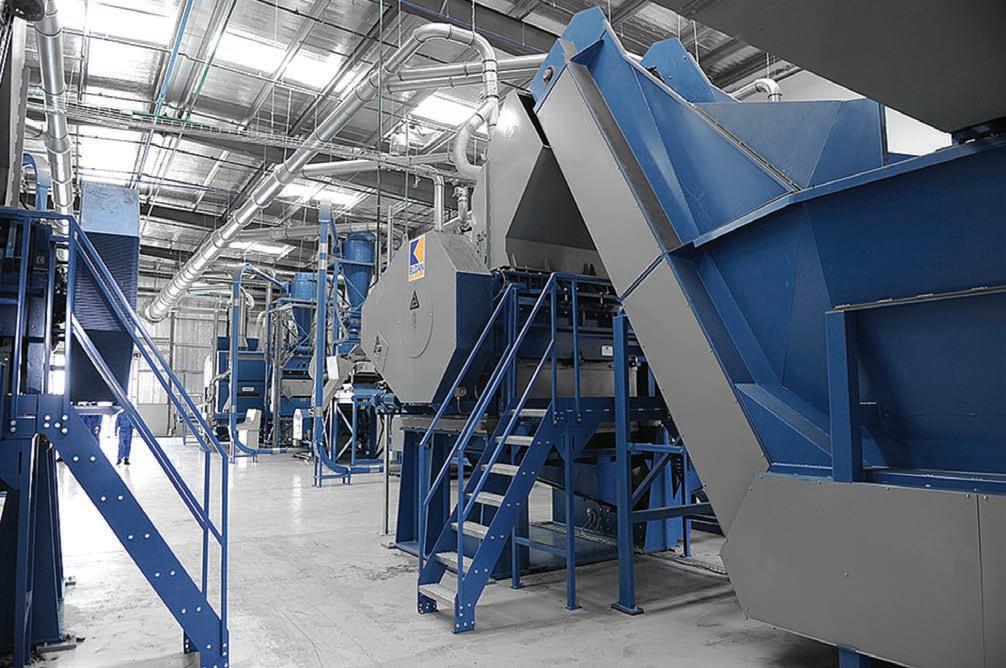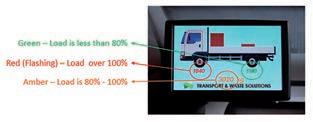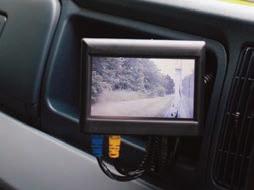
3 minute read
GROWING PILES OF EOLT
ELDAN Recycling is further supporting the growing circular economy.
What to do with growing piles of EOL tyres?
ELDAN RECYCLING’S BJØRN LAURSEN EXPLORES THE GLOBAL ACCELERATION OF THE TYRE RECYCLING DOWNSTREAM PRODUCTS MARKET.
According to the World Business Council for Sustainable Development’s Tyre Industry Project, the world is projected to generate approximately one billion end-of-life tyres each year.
This development demands an increased focus on how to include end-of-life tyres (EOLT) in the circular economy to avoid illegal burning and filling up landfills all over the world.
Danish manufacturer of tyre recycling equipment, ELDAN Recycling, has experienced a continued interest in their solutions from customers all over the world despite the COVID-19 situation.
Bjørn Laursen, Product Manager for tyres at ELDAN, suspects this development is the result of a combination of regulatory changes around the world and an increased focus on circular economy and recycling as a profitable business.
RECYCLING POTENTIAL
Tyres are a good example of how one type of waste can be recycled in many ways.
“Products from EOLTs have many uses depending on the level of processing involved,” Laursen explains. “The traditional approach is downsizing and burning them for energy – known as Tyre-Derived Fuel (TDF)”.
Most research suggests that emissions are lower for both CO2 and NOx when burning TDF in facilities with proper air pollution controls compared to traditional fossil fuels.
As such, this is a relatively environmentally friendly and a cheap alternative energy source in the cement, paper and other industrial industries.
“If processed further and cleaned to industry standards, steel and textile free rubber chips, granules, and powder have a wide variety of usages and sell for more than TDF,” Laursen says.
Tyre chips can be used in landscaping and as infill for horse tracks, and granules and powder are used for athletics tracks, playground mats and even shoe soles.
Apart from the rubber, almost a quarter of the tyre’s weight is
steel, which can be reused in the steel industry.
“Cleaning the steel wire can be a profitable side business,” Laursen explains.
“Some customers report prices being up to four times higher for cleaned steel wire compared to wire still containing rubber and textile.”
Ensuring output purity is one of ELDAN’s main focuses and something that is not easy when recycling tyres, especially passenger car tyres.
These contain more textile which produces a lot of fluff and dust when the tyre is downsized without the proper setup. This can contaminate both the rubber granulate and the air around the plant.
“It is easier to sell rubber from recycled tyres with a guaranteed output purity because the quality of the end product is more consistent,” Laursen says.
“We predict this will be even more important in the future when more products join the circular economy.”
DEVELOPMENT AND TRENDS
The market is constantly developing, and recent years have seen an increase in projects investigating the usage of recycled rubber.
One emerging market is pyrolysis of both whole and downsized tyres. The rubber itself is broken down into oil and gas for fuel, and the solid material remaining after pyrolysis (char) still poses huge innovation potential.
Other promising markets are crumb rubber added to building materials like road asphalt and concrete.
Projects in Australia, Europe, and the United States have shown promising results already with the potential to enhance building materials, and many other countries are looking into the possibilities too.
“We are aware that market trends are changing all the time,” Laursen concedes.
“But with a flexible tyre recycling plant that can be adjusted to produce many different high purity output sizes, it is effortless to change production to accommodate customer needs as they develop.”
The Global Tyre Recycling Downstream Products market is expected to reach AUD$8.06 billion (approximately €5.11 billion) by 2027 according to Transparency Market Research, indicating a sound business in years to come.
CHAIN OF RESPONSIBILITY LEGISLATION GOT YOU WORRIED? RELAX!
With TWS and Axtec there is no longer any reason or excuse for your vehicles to be overloaded
ONBOARD AXLE LOAD INDICATOR
DISPLAYS AXLE AND GROSS WEIGHTS
SIMPLE COLOURCODED DISPLAY

Visual and audible warnings alert drivers to load errors Side and rear cameras Single touch-screen displays all functions - less driver distraction

WITH AXTEC ONBOARD
You can: • Load vehicle to capacity every time • Avoid fi nes and threats to Operating License • Avoid excessive wear and tear to associated with overloads • Reduce environmental impact • Receive real-time notifi cations via GPS / telematics system • Connect cameras to improve safety to pedestrians and cyclists
ph: 02 9623 1800 e: chris.coleman@twsaust.com.au www.wastemanagementreview.com.au / www.twsaust.com.au WMR / 29







